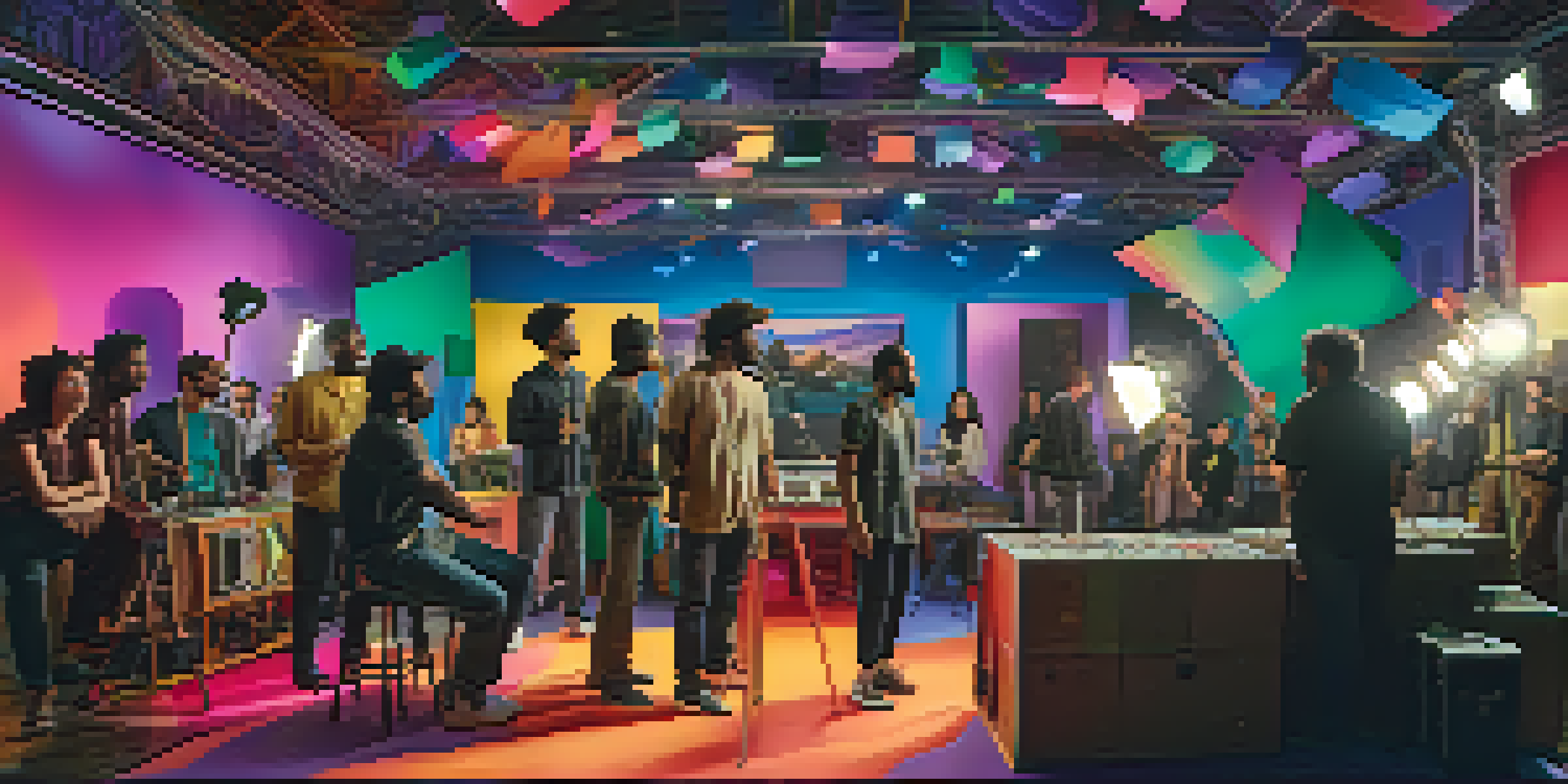Challenges Facing Diversity Initiatives in the Film Industry

Understanding the Importance of Diversity in Film
Diversity in the film industry goes beyond just representation; it enriches storytelling and connects with broader audiences. When films reflect various cultures, perspectives, and experiences, they resonate more deeply with viewers. This inclusion not only promotes empathy but also drives box office success, as audiences crave authenticity and relatability in the stories they watch.
Diversity is being invited to the party; inclusion is being asked to dance.
However, the path to achieving this diversity is often fraught with challenges. The industry has a long history of underrepresentation, particularly for marginalized groups, which creates a significant gap in opportunities. As a result, many talented individuals remain on the sidelines, limiting the range of stories that can be told.
Ultimately, fostering diversity in film isn't just a moral imperative—it's an economic one. When diverse voices are heard, the film landscape becomes richer and more innovative, leading to a more vibrant industry overall.
Systemic Barriers to Diversity in Filmmaking
One major hurdle in promoting diversity is the systemic barriers that exist within the industry. These barriers often manifest in hiring practices, funding opportunities, and access to networks, making it difficult for underrepresented groups to break in. For example, many directors and producers come from similar backgrounds, perpetuating a cycle of homogeneity.

Additionally, the decision-makers—the studio executives, producers, and financiers—are often not diverse themselves. This lack of representation can lead to unconscious biases in the types of stories that are greenlit, further marginalizing voices that need to be heard. Without a diverse leadership, initiatives for change can falter.
Diversity Enriches Film Storytelling
Incorporating diverse cultures and perspectives enhances storytelling and connects filmmakers with broader audiences.
To truly overcome these systemic barriers, there needs to be a concerted effort from all levels within the industry. This includes re-evaluating hiring practices, creating mentorship programs, and fostering inclusive environments that celebrate different backgrounds.
Stereotyping and Typecasting in Film Roles
Stereotyping and typecasting are significant challenges that continue to undermine diversity in the film industry. When characters are pigeonholed into narrow roles based on their ethnicity, gender, or sexual orientation, it not only limits the actors' opportunities but also reinforces harmful societal stereotypes. For instance, the portrayal of certain ethnic groups as criminals or submissive characters creates a skewed perception of reality.
Films are often the mirror reflecting the society we live in. If we want to see a more diverse world, we must tell more diverse stories.
Moreover, these stereotypes often discourage talented actors from pursuing roles that don't fit the mold, leading to fewer opportunities for diverse talent to shine. The audience, too, suffers, as they miss out on a fuller spectrum of human experience that could be depicted through more complex characters.
Breaking free from these stereotypes requires bold storytelling and a willingness to challenge the status quo. Filmmakers must strive to create multidimensional characters that defy societal expectations, paving the way for more authentic representation.
The Role of Audience Expectations in Diversity
Audience expectations can play a double-edged sword when it comes to diversity in film. On one hand, there is a growing demand for more diverse stories and characters, as audiences increasingly seek representation that reflects their own lives and experiences. Films that embrace diversity often enjoy critical acclaim and box office success, proving that there is a market for these narratives.
On the other hand, some audience segments may hold onto traditional views that resist change. This resistance can manifest in backlash against films that prioritize diversity, leading to hesitation among studios to fully embrace inclusive storytelling. The fear of alienating certain demographic groups can stifle creativity and limit the scope of what can be told on screen.
Systemic Barriers Limit Opportunities
Systemic challenges in hiring and funding create significant hurdles for underrepresented voices in the film industry.
Navigating these expectations requires a delicate balance. Filmmakers must stay true to their vision while being mindful of audience reception, ultimately pushing for stories that resonate with a diverse viewer base.
Funding Challenges for Diverse Filmmakers
Securing funding is one of the most significant obstacles faced by diverse filmmakers. Traditional funding sources often favor projects that align with established norms, making it difficult for unique and underrepresented voices to obtain the necessary financial backing. This lack of support stifles innovation and limits the variety of stories that can emerge from diverse perspectives.
Moreover, even when diverse filmmakers do secure funding, they often face additional scrutiny regarding the commercial viability of their projects. Investors may question whether an unconventional story featuring diverse characters will attract a wide audience, leading to hesitance in backing such films.
To tackle these funding challenges, new financing models and partnerships need to be explored. Crowdfunding, grants, and collaborations with organizations dedicated to promoting diversity in the arts can provide avenues for diverse filmmakers to bring their stories to life.
The Impact of Social Media on Diversity Initiatives
Social media has emerged as a powerful tool for advocacy, amplifying voices and stories that might otherwise go unheard. It provides a platform for diverse filmmakers to showcase their work, connect with audiences, and rally support for their projects. Movements like #OscarsSoWhite have sparked conversations about representation, pushing the industry to prioritize diversity.
However, social media can also present challenges, as it creates an environment where filmmakers face instant criticism and scrutiny. This pressure can deter some creators from taking risks with their projects, leading to a more cautious approach to storytelling. The fear of backlash can result in a reluctance to explore complex narratives that reflect diverse experiences.
Social Media Amplifies Diverse Voices
Social media serves as a powerful platform for advocating diversity in film, though it also brings challenges of instant scrutiny.
Despite these challenges, the overall impact of social media remains largely positive. It empowers underrepresented voices and holds the industry accountable, creating a more inclusive landscape for future filmmakers.
The Future of Diversity in the Film Industry
Looking ahead, the future of diversity in the film industry holds both promise and uncertainty. As awareness of the importance of representation continues to grow, there is an opportunity for change to take root. New initiatives, such as diversity quotas and funding programs specifically for underrepresented filmmakers, are being introduced, signaling a shift in the industry's approach.
However, true change requires ongoing commitment and collaboration among all stakeholders—filmmakers, studios, and audiences alike. It’s essential to foster an inclusive environment that values diverse voices and encourages innovative storytelling. Only then can a more representative film industry flourish.

Ultimately, the journey toward diversity is just beginning. By embracing the challenges and remaining dedicated to inclusivity, the film industry can create a more vibrant and dynamic future where all stories are told.